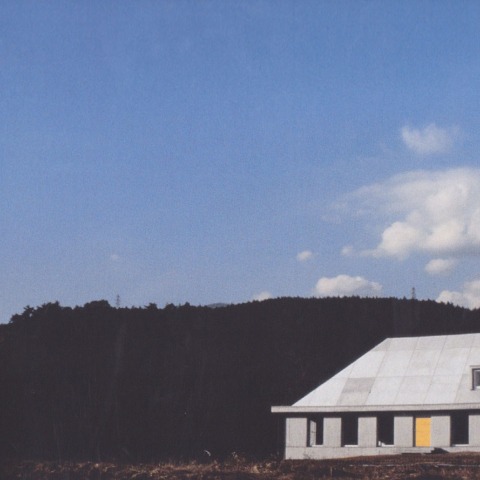This type of traditional housing comes from the Ainu Kotan area (Hokkaido island) and is built with vegetal materials: bamboo, grass, etc. Kazuo Shinohara reinterpreted in stark concrete the properties of these traditional houses. The stance of the architect regarding housing and its role in contemporary architecture differs from his coetaneous Japanese metabolism, making housing in the central element of his speech, even claiming that "houses are art".
In this way, we could say that house in Ashitaka is a confluence of Shinohara's interpretation of japanese tradition and his views regarding housing, which led to Shinohara's deviation of the metabolist technocracy to the intimate and small scale architecture. The exterior of the housing, of a simplistic character, leads the visitor to an intimate and, at first sight, little expectable interior. Shinohara expertly interweaves these two realities so that their coexistence is not strident, but an obvious reality.
In this way, we could say that house in Ashitaka is a confluence of Shinohara's interpretation of japanese tradition and his views regarding housing, which led to Shinohara's deviation of the metabolist technocracy to the intimate and small scale architecture. The exterior of the housing, of a simplistic character, leads the visitor to an intimate and, at first sight, little expectable interior. Shinohara expertly interweaves these two realities so that their coexistence is not strident, but an obvious reality.
In his ‘Conversation with students’ Valerio Olgiati refers to Shinohara’s Ashitaka House with these words: "When you look at the plans, it looks simple at first. When you look at the building, you think there is a direct affinity between what you see on the outside and what you expect on the inside. Shinohara lets secrecy and straight-forwardness coexist, so much that one could define the houses as being shizophrenic. However, there are always those moments when two seemingly disparate systems overlap because Shinohara carefully omits to build borders between two things. So, it is not a collage. The two realms are not pasted together. They remain separate but still communicate something that is beyond what each disparate system can suggest on its own. The complexity in Shinohara’s architecture is achieved by means of a certain ambivalence that mysteriously nits the entire work together. I find this interesting because it appears less logical but at the same time it is very logical."




























